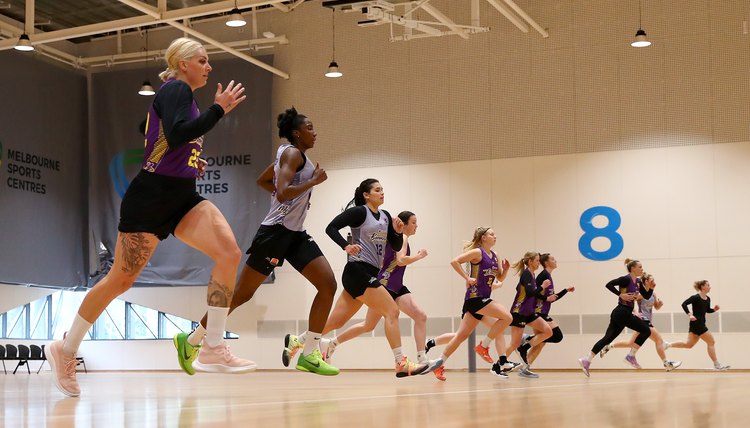5 Things You Need to Know About Doing Suicides in Basketball

Whether you are a high school, NCAA or NBA basketball player, one of the most important aspects of the game is conditioning. While each basketball coach has their own way of improving their teams’ conditioning, a common conditioning drill is known as “suicides” or “gassers.” Here are five things to know about it.
- How to run suicides
- The benefits of running suicides
- When to run suicides
- Other basketball conditioning drills like suicides
- Video demonstration of suicides
How to Run Suicides
Suicides use the key lines on a basketball court to mark off the running points for players to reach. The premise of the drill is to start on one baseline, touch one of the lines, and then return to the original starting position. The challenging part of the drill is its continuity- the drill is not complete until you touch all but one of the lines twice.
The lines on a basketball court that are used in this drill are the baselines, free throw lines, and the half court line. Here is what a complete suicide looks like:
- Players begin on one baseline, and on the whistle, sprint out to the free throw line in front of them
- Once they touch the free throw line with their hand, they sprint back to the original baseline
- Without stopping, they sprint back out to the half-court line, and then back again to the original baseline
- Players then repeat the same process with the opposite free-throw line, followed by the opposite baseline
The Benefits of Running Suicides
Suicides are one of the best basketball drills for conditioning because they use game-like movement patterns, such as sprinting up and down the court at varying lengths, in order to be completed.
While on defense, players must be able to quickly change direction while moving at a high rate of speed, such as when they are defending a player who is dribbling- suicides work on this by forcing players to touch different lines, change direction, and sprint towards the next line.
When to Run Suicides
There is no right or wrong time for a basketball team or player to run suicides. In fact, they can be used for many different things:
- As a form of “punishment” for a team or player if they are not focused at practice, show up late, or do anything else to negatively impact the well-being of the team
- At a basketball tryout, to see which players have been working out and preparing on their own
- At the beginning of practice as a warm up
- At the end of practice, which is perhaps the most effective at working on conditioning because players are already tired
Suicide Drill Full Video
Former college and NBA coach Quin Snyder demonstrates how to do suicides in this video.
Other Basketball Conditioning Drills like Suicides
Instead of doing suicides at every practice, many coaches like to do other conditioning drills to mix it up for their players and test their bodies in different ways. One other challenging conditioning drill is called defensive slides.
To perform defensive slides, players begin in the middle of the free throw lane, and on the sound of the whistle, shuffle their feet to one side of the lane. Once they reach one end of the free throw lane, they slide to the other side, and continue to go back and forth in the lane for a set amount of time.
This drill is exceptional for working on staying in a defensive position for a long period of time, which often happens during long possessions in a basketball game. Another way to do defensive slides is starting in the middle of the lane and going all the way from sideline to sideline, but many players find that going from side to side within the free throw lane is more challenging.
Other popular conditioning drills incorporate ball handling, rebounding and layups.
